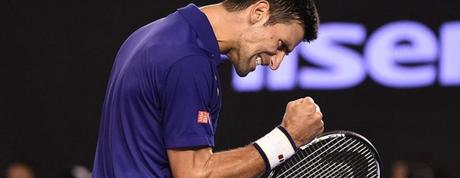
One of the most valuable skills you can have as a (singles or doubles) tennis player is the ability to quickly size up your opponent. Without doing so, there is no solid point of reference in terms of what strategies you'll need to in order to gain the advantage. In league tennis, there will be many times when you'll play against new opponents, so it's important to take mental notes (starting in the warm-up,) regarding your opponent's game. Even if you've played them before, they could have learned new skills and gotten stronger and/or faster since your last encounter on the court.
Below are some key things to look for to help you analyze your opponent's tennis playing style in real-time so that you can adjust your game on the fly and maintain a competitive edge.
Grip: Take note of their grip style...is it western or semi-western, eastern, continental or a hybrid? An eastern forehand grip typically produces a more flat stroke, while a western forehand grip will normally produce more topspin. Identifying your opponent's grip will help give you an idea as to the type of shots you might encounter.
Playing Style: Most players can be loosely categorized into four different tennis playing styles: serve-and-volleyer, aggressive baseliner, counterpuncher, or all-court player. Serve-and-volley players tend to rely heavily on their serve, and they love to rush the net early. Aggressive baseliners tend to hang back and hit the majority of their shots from the baseline area, and will often try to deliver powerful strokes down the sideline. Counterpunchers take more of a defensive position by engaging in long rallies and will often win points by simply outlasting their opponents. All-court players are the most difficult to peg because they have very few noticeable stroke preferences and are effective from the baseline as well as the net. Once you've identified which playing style your opponent tends to favor, adjust your shots to disrupt them and keep them out of their comfort zone. Remember that everyone has weaknesses; you just need to do your homework to find them.
Emotional Control: Does your opponent tend to get frustrated easily? Can they handle aggressive play, or are they easily intimidated? Find out what it is that upsets them...and do it. Take mental notes on everything that triggers your opponent's emotional weaknesses, and use that knowledge against them whenever possible.
Physical Ability: Be sure to identify key areas of your opponent's physical abilities such as speed, strength, control, agility and reaction time. If they're slow, hit cross-court volleys. If they have a hard time controlling their shot on high backhands, then that's where you should aim. If they don't have much stamina, hit corner to corner and wear them out.
Stroke Preferences: Does your opponent favor forehands or backhands? Which strokes do they seem to make the most mistakes with in terms of execution? Take note of the quality and delivery of their topspin and slice shots, looking for clues as to how to exploit them to your advantage. For example, if they if your opponent has a weak, floaty backhand, hit hard and deep to that side and follow the ball in for a probable put-away volley.
Response to Specific Shots: During the match, try to execute a variety of different shots in order to observe how your opponent responds. How do they handle short, low balls or high deep balls? How do they react to lobs and drop shots? How do they handle shots on the run? Can they respond quickly to cross-court shots? Paying good attention to your opponent's responses to specific shots will help you determine what shots you should capitalize on to exploit their weaknesses.
Serve: How strong and accurate is your opponent's first serve? How strong is their second serve? Do they seem to be in control of their swing, or are they somewhat haphazard? Do they have predictable ball placement? Analyzing your opponent's serve will give you clues as to how to position yourself for the most advantageous returns.
One other important thing to know is that if you play doubles tennis, you MUST communicate with your partner about everything you observe, and vice-versa. You are a team, and in order to be the most effective team, you MUST be on the same page.
Remember that the ultimate goal of analyzing your opponent is to find ways to pit your strengths against his/her weaknesses. Pay attention to every detail of your opponent's playing style, and then make fast real-time adjustments to your own game, all the while gauging their response. I know that sounds difficult, but with enough practice and effort, you'll soon be able to quickly, almost instinctively adjust your game so you can stay one step ahead of your opponent at all times.


